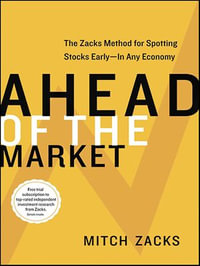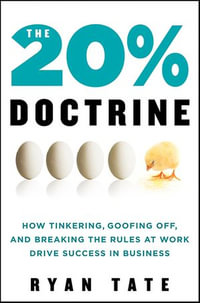
eBOOK
What Is A Distribution Channel, The Types Of Distribution Channels, The Benefits Of Manufacturers Leveraging Indirect Distribution Channels For Their Products To Reach Customers, And The Benefits Of Manufacturers Using Direct Distribution Channels
eBook | 3 May 2023
At a Glance
eBook
$26.21
OR
Free with Kobo Plus Read
Start Free Trial *- Subscribe and read all you want.
- $13.99 a month after free trial. Cancel Anytime. Learn more.
Instant Digital Delivery to your Booktopia Reader App
Read on
This essay sheds light on what is a distribution channel, demystifies the types of distribution channels, reveals the benefits of manufacturers leveraging indirect distribution channels for their products to reach customers, and explicates the benefits of manufacturers leveraging direct distribution channels for their products to reach customers. A distribution channel represents a network of intermediaries that products pass through to reach the end users, the customers. The intermediaries that are apart of an indirect distribution channel encompass businesses, such as distributors, wholesalers, and retailers. The more intermediaries that are apart of an indirect distribution channel, the higher the prices that the products need to sell for in order for the product sales to be profitable for the intermediaries that are apart of an indirect distribution channel. In stark contrast to an indirect distribution channel, a direct distribution channel renders it possible for manufacturers to sell their items directly to customers without its products being sold to intermediaries before reaching the end users, the customers. It is easier for companies to sell their items directly to customers without their products being sold to intermediaries before reaching their target market in contexts in which they have digital product offerings. Most companies however produce tangible products in lieu of digital products and would therefore prefer to avail themselves of having their products pass through a network of intermediaries to reach the end users if it can allow them to ultimately maximize their sales volume even if doing so results in yielding them a lower profit margin per sale. When companies have their products pass through a network of intermediaries to reach the end users, they resort to selling their products to intermediaries at significantly discounted rates in lieu of selling their products directly to customers at higher price points. The retailers charge customers significantly higher price points for the manufacturer's product offerings than the price that the retailers paid per unit when purchasing the inventory of products from the wholesalers. Manufacturers believe that the profits elicited from having an enormous sales volume by selling their products to intermediaries in sizeable quantities at a discounted rate per unit will yield them more sales revenue than selling their products directly to customers at a higher profit margin per product sold. If manufacturers of tangible products were to sell their products directly to customers at a higher profit margin per product sold, then they would aptly yield a significantly lower sales volume and less sales revenue than if they were to sell their products to intermediaries in sizeable quantities at a discounted rate per unit. Fortunately for manufacturers, retailers are able to reach the manufacturer's end users, the manufacturer's target market, on behalf of the manufacturer as long as the retailers renders the manufacturer's product offerings easily purchasable to the manufacturer's target market. In an indirect distribution channel, a product for instance that is produced by the manufacturer may pass through ample intermediaries, such as distributors, wholesalers, and retailers before it reaches the end users, the customers, which is the primary reason as to why tangible products are often far more expensive for customers to purchase than they otherwise would be if they only passed through a direct distribution channel before reaching the end users. The more intermediaries that there are apart of an indirect distribution channel, the lower that the manufacturing costs need to be by the manufacturer of the product in order for the sales of the product to be profitable for all intermediaries that are apart of the indirect distribution channel. The types of distribution channels encompass direct distribution channels and indirect distribution channels. As per direct distribution channels, the direct distribution channels allows the manufacturer of the products to be able to sell their products directly to customers. The manufacturer of the products in a direct distribution channel may for instance sell their products via online on their e-commerce website to their customers. The manufacturer of the products in a direct distribution channel may also have their own brick and mortar retail stores which they can leverage to sell their products at. Bakeries for instance are businesses that leverage the direct distribution channel to be able to sell their products directly to customers. As per indirect distribution channels, there are "three types of indirect channels" which encompass the one-level channel, the two-level channel, and the three-level channel.
Read on
ISBN: 1230006397500
Published: 3rd May 2023
Format: ePUB
Language: English
Publisher: Dr. Harrison Sachs























